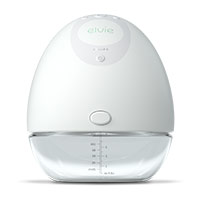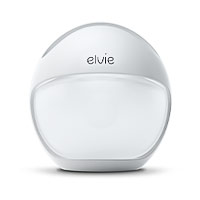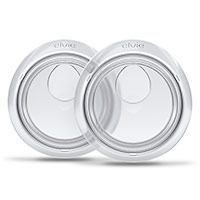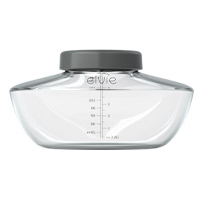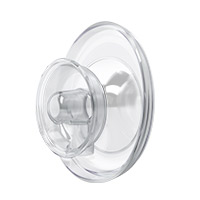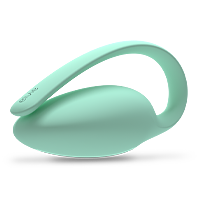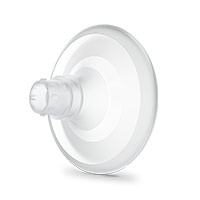In a world where you can order a burrito to your door in minutes, find out the meaning of life with a quick Google search, and give yourself an orgasm in 30 seconds flat, it might seem a bit much like hard work to commit to Kegel exercises. Will your pelvic floor muscles actually get stronger, and do you really have to do them every day to get results?
These are questions many women ask when it comes to training their pelvic floor muscles — and we’re here to provide the answers. So, if you’re unconvinced about whether Kegel exercises actually do work, or you’re simply wondering how long you need to persevere before you start seeing results, read on.
Does Kegel exercise work?
If you’re experiencing pelvic floor issues such as urinary incontinence or lower back pain, this is generally due to a weakening of the pelvic floor muscles — which might be the result of pregnancy, childbirth, weight gain, or aging. Performing Kegel exercises regularly can help to strengthen the pelvic floor and reduce symptoms associated with pelvic floor dysfunction.
Kegel exercises won’t work for everyone, of course — their effectiveness and the time it takes to see results may vary from person to person — but studies have shown them to be may help to achieve a 75% reduction in incontinence when combined with biofeedback techniques.
Whether you suffer from pelvic floor dysfunction, you’re looking to rebuild pelvic floor strength following childbirth, or you simply wish to prevent pelvic floor issues in future, Kegel exercises can have a number of health benefits. These benefits include:
Reduced urinary incontinence: Following childbirth, during the menopause, or simply as you age, the likelihood of involuntarily leaking urine increases. By strengthening the pelvic muscles, Kegels can be particularly effective at reducing stress incontinence.
Better sex: Yep, Kegels can even have a positive effect on your sex life. By increasing blood flow to the vagina, Kegel exercises can enhance sensation and increase the frequency and intensity of orgasms, making sex more enjoyable for you and your partner.
Reduced chance of pelvic organ prolapse: Pelvic organ prolapse (POP) occurs when the pelvic organs press up against the walls of the vagina, and can happen following pregnancy. Stronger pelvic floor muscles provide better support for the pelvic organs, reducing the chances of experiencing prolapse.
How often should you do Kegels?
Physiotherapists recommend that you do pelvic floor exercises at least once a day. You should aim for around 30 to 45 Kegels each day, but it’s best to split these into 3 sessions of around 10 to 15 repetitions each. Try to spread these out throughout the day — one set in the morning, one in the afternoon, and one in the evening — and build them into your daily routine.
As with any exercise, of course, you can overdo it. While over-exercising the pelvic floor muscles will likely only cause temporary mild to moderate pain or discomfort, you shouldn’t exceed the recommended daily amount of Kegel exercises. If you experience pain, take a break from Kegels — and contact your doctor if the pain doesn’t subside.
How long does it take for Kegels to work?
Just like any other type of exercise, the more regularly you do Kegels, the quicker you can expect to see results. In most cases, you should notice an improvement in the strength of your pelvic floor within 6 to 8 weeks, although naturally this will vary from person to person.
After you begin to notice some improvements, the name of the game is being consistent. Boring but true. You have to keep the Kegel exercises going to maintain the benefits. Long-term problems like a weakened pelvic floor require commitment to regular training, and remember that prevention is much better than cure — so it’s best to start before you experience any pelvic floor issues.
What if I’m not seeing any results?
If you’ve been doing Kegels religiously for a number of weeks but you’re not noticing an improvement, it may be because you’re not working the muscles in the right way (or you’re working the wrong muscles altogether). Squeezing your pelvic muscles should feel like you’re trying to stop yourself from urinating mid-flow (if you’re not sure what that feels like, give it a try next time you go to the bathroom).
If you’re still struggling to engage the right muscles, a pelvic floor exerciser like Elvie Trainer eliminates that problem using real-time feedback; you’ll know if you’re not doing your exercises properly immediately. Some women push down during Kegel exercises (which isn’t the right way to do it), but our pelvic floor trainer will detect incorrect movements like these and show you the best technique.
Still struggling to get results? Check if you’re making one or more of the common mistakes when doing Kegels. Alternatively, it could mean the issue you’re trying to improve won’t be fixed with Kegels, at which point you should consider speaking with a doctor.
How to get the most out of your Kegels
Find the right muscles
The most common reason for Kegels not working — or progress feeling frustratingly slow — is that you’re not engaging the right muscles. To find your pelvic floor muscles, try stopping your urine in midstream (although don’t make a habit of this) — the muscles involved in stopping urination are those you should be contracting when doing Kegel exercises.
If you’re squeezing the muscles in your abs, thighs or buttocks, you’re not doing it quite right. You should be focusing on working the pelvic floor muscles only (it’s great to work those other muscles out separately, but it won’t help much with pelvic floor training).
Make sure you’re comfortable
It’s important to perform your pelvic floor exercises in a position that feels comfortable for you. You can do Kegels just about anywhere, at any time, but you’ll get better results — and find it easier to keep up your motivation — if you’re comfortable while you’re doing them.
When you first attempt Kegels, it may be best to start from a lying position. This will make it easier for you to ensure you’re using the right muscles. As you perfect your technique and you feel more confident doing them, you can progress to performing pelvic floor exercises in any position that suits you — whether that’s lying, sitting or standing.
Focus on your breathing
With any form of exercise, perfecting your breathing technique will help you keep going for longer and get the most out of your workout. That applies to Kegels, too: if your breathing is erratic, or you’re holding your breath while contracting your muscles, you might find that your pelvic floor exercises are not as effective as they could be.
Before you begin your Kegels, inhale and then relax, exhaling slowly through your mouth. Breathe in slowly before each contraction, and then breathe out as you squeeze your pelvic floor muscles — as you lift, imagine you’re pushing that extra air out of your body through the nose and mouth.
Build a Kegel habit
Because it’s so important to do your pelvic floor training over a long period of time, motivation is crucial. With any type of workout, it can be difficult to keep up momentum and push yourself to keep going, but remind yourself why you’re doing it. The time you dedicate to Kegel training each day will be well worth it in the long run.
Pelvic floor exercises should only take up around 10-15 minutes of your day, and because you can do them pretty much anywhere — at your desk or sitting on the sofa — it’s fairly easy to build them into your daily routine. Try to do a set in the morning, afternoon, and evening, and maybe set an alarm to remind you to do them at the same time each day.
Use a Kegel trainer
Of course, you can do Kegels without a pelvic floor trainer, but the Elvie Trainer is linked to an app that will help make exercising more fun and help you get better, faster results. By providing real-time guidance and feedback, you can perfect your Kegel training technique and track your progress as you go.
Think of it as you might think of some new workout gear — just as your shiny new running shoes will make that 5k a lot more appealing, Elvie Trainer will kickstart your Kegel training routine and make your pelvic floor workouts more enjoyable.
The medical information in this article is provided as an information resource only and is not to be used or relied on for any diagnostic or treatment purposes. Please consult your doctor for guidance about a specific medical condition.


